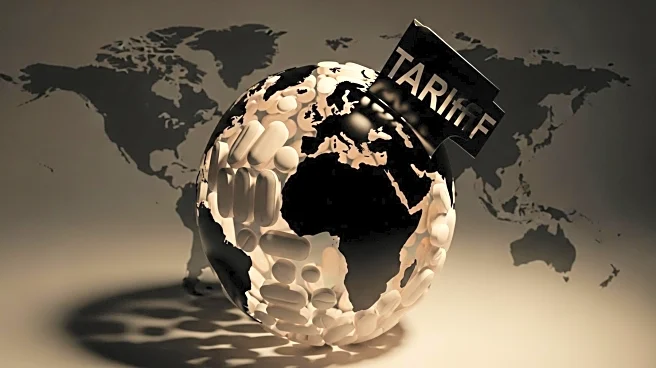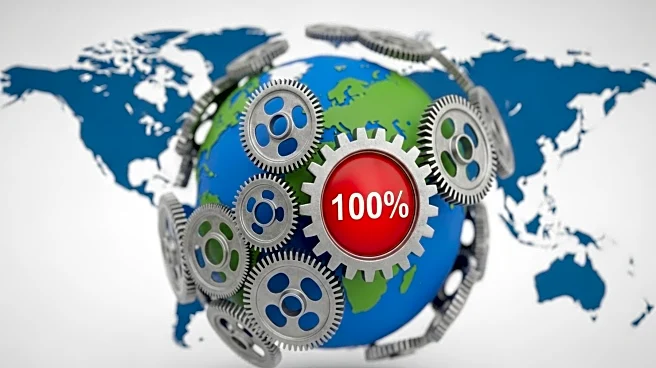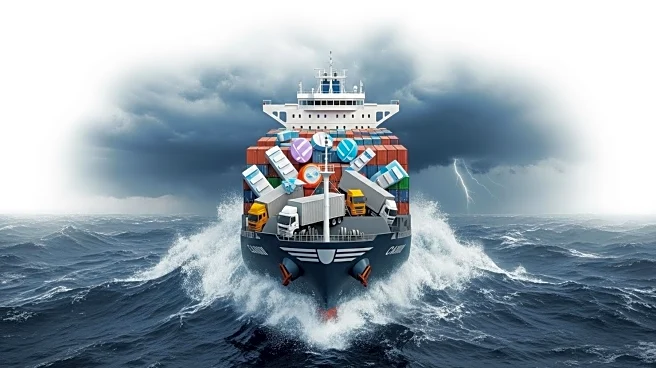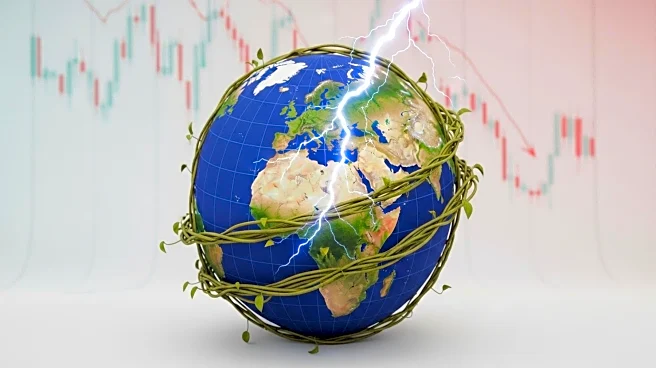What is the story about?
What's Happening?
President Donald Trump has announced a new trade policy imposing a 100% tariff on imported branded or patented pharmaceutical products, effective October 1, 2025. This policy aims to incentivize domestic production and reduce reliance on foreign pharmaceuticals. Companies can avoid the tariff by initiating the construction of manufacturing facilities within the United States. The policy introduces uncertainty for global manufacturing and logistics planning, as it may apply in addition to existing tariffs on pharmaceuticals imported from the European Union.
Why It's Important?
The imposition of a 100% tariff on imported pharmaceuticals could significantly impact the pharmaceutical industry, affecting manufacturing strategies and supply chains. Companies may face increased costs and logistical challenges, prompting a reevaluation of their global manufacturing footprint. The policy could drive investment in US-based manufacturing infrastructure, as companies seek to avoid tariffs and secure market access. However, the lack of clarity around the tariff's implementation may create uncertainty and hinder investment decisions.
What's Next?
Pharmaceutical companies are likely to increase investments in US manufacturing facilities to avoid tariffs and maintain market access. This shift may lead to the development of new production lines and the transfer of technology to domestic sites. Regulatory and supply chain implications will need to be addressed, as companies navigate the complexities of establishing new manufacturing capabilities. The policy may also prompt other countries to adopt similar measures, potentially affecting global trade dynamics in the pharmaceutical sector.
Beyond the Headlines
The tariff policy highlights the ongoing challenges of securing pharmaceutical supply chains and the importance of domestic manufacturing. It raises questions about the balance between trade protectionism and global collaboration in addressing supply chain vulnerabilities. The policy may also influence future regulatory and trade policies, as governments seek to strengthen domestic industries and reduce dependency on foreign imports.
AI Generated Content
Do you find this article useful?













